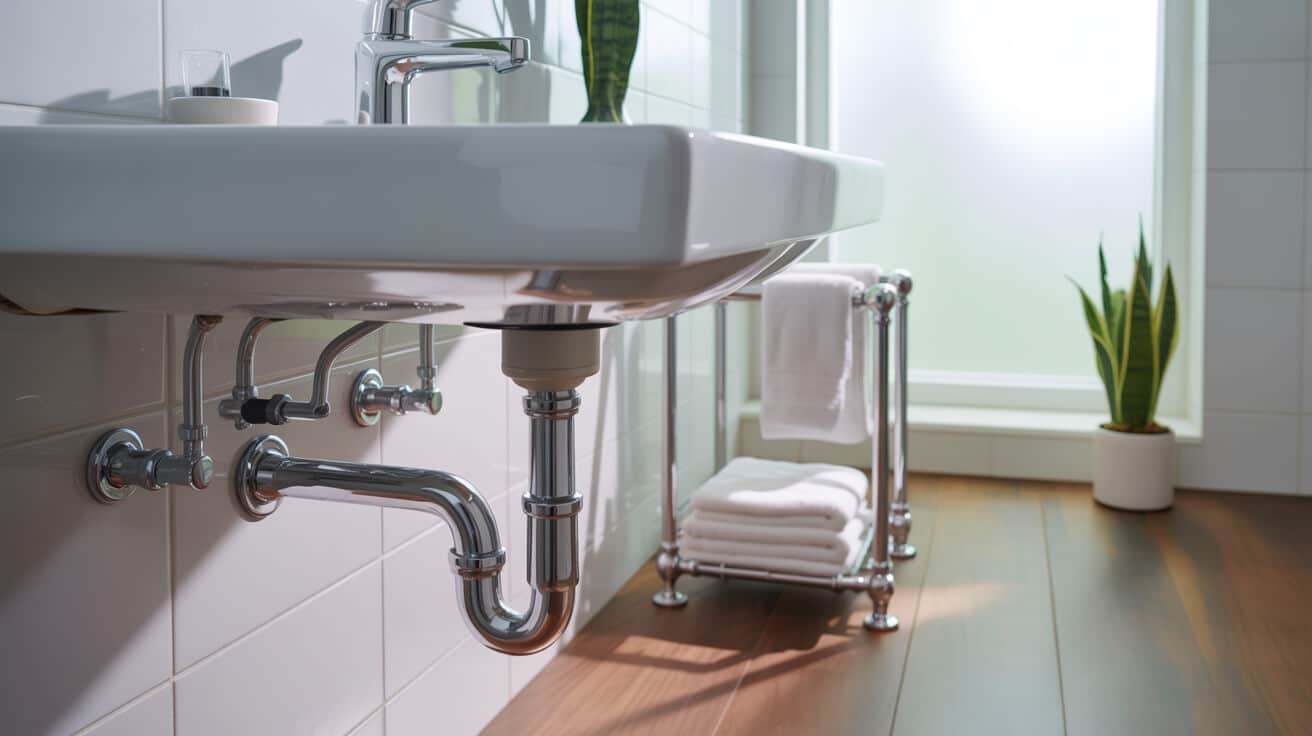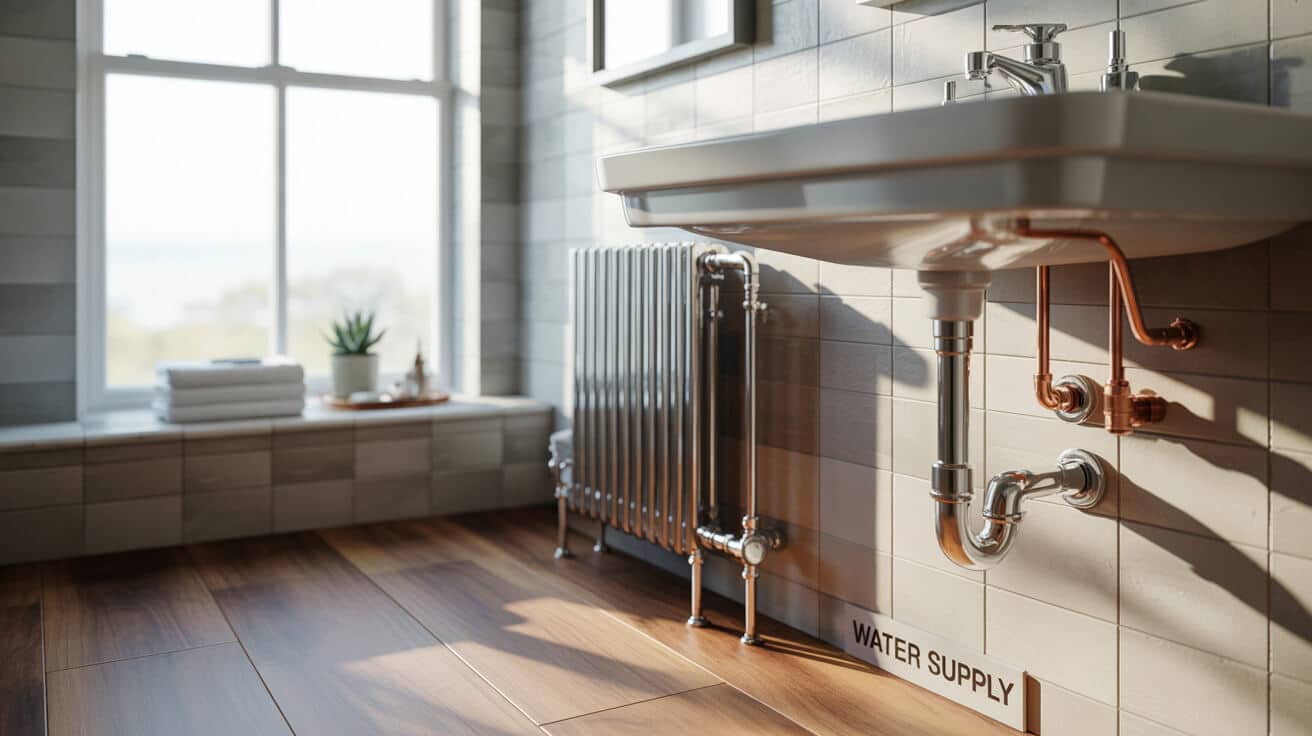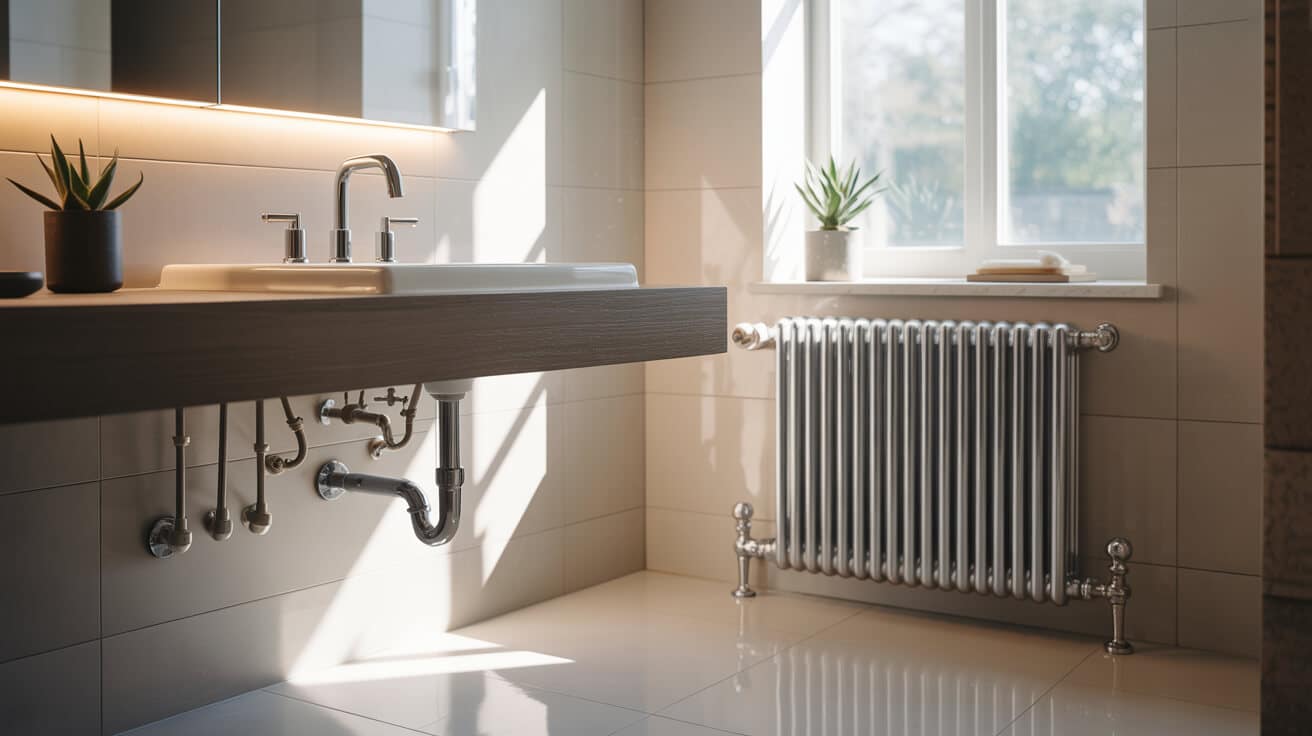The current legal framework for plumbing-related water supply standards is primarily built on the Water Supply (Water Fittings) Regulations 1999, encompassing both domestic and commercial premises. These regulations are supported by national, regional, and trade-specific guidance, most notably from the Water Regulations Advisory Scheme (WRAS), WaterSafe, and the Drinking Water Inspectorate. The intent is to standardise technical specifications for pipes, taps, fittings, and appliances; to define and enforce the notification process for specified works; and to promote actionable system resilience for property owners. By adhering to these standards, your company can achieve legal compliance, enable efficient maintenance, and avoid the insurance exclusions and operational setbacks that accompany improper installation.
Etymology or Name Origin
The term “water supply regulations” arises from a confluence of law, engineering, and municipal health efforts and reflects an evolving conversation between scientific advancement, public safety priorities, and technical craft guilds. Plumbing derives from the Latin plumbum for lead—the core material for pipes in historical systems—underscoring the deep-rooted connection between linguistic heritage and physical infrastructure. With modern systems now using copper, polyethylene, and composites, the terminology persists, codifying a centuries-long shift from empirical practice to statute-driven professionalism.
Overview / Context
Water regulation in plumbing exists as a proactive safeguard against the dual threats of contamination and inefficiency. For your property, compliance affects every pathway where water is delivered, stored, and ultimately consumed, whether for drinking, sanitation, or process requirements. The ecosystem of agencies—Defra (Department for Environment, Food & Rural Affairs), Ofwat (Water Services Regulation Authority), DWI (Drinking Water Inspectorate), WRAS, and local water undertakers—collectively shapes the regulatory landscape. Companies operating within this framework are required not only to know and apply the law, but also to act as interpreters for your obligations as an owner or responsible party.
Regulatory environment and public health rationale
A central aim of water supply standards is to close the loopholes that historically allowed waterborne disease to proliferate. Statutes now prescribe allowable materials, installation techniques, and maintenance protocols to prevent both macro-contamination incidents and subtle, ongoing risks such as lead leaching or biofilm formation on age-worn pipes.
Role in plumbing and heating industry
For professionals, these regulations mean every job is a compliance exercise—from routine tap swaps to whole-system refurbishments. By consistently applying WRAS- and DWI-listed materials and maintaining robust documentation, leading firms serve as both compliance partners and operational risk mitigators for your company.
Utility and inspection protocols
Water utilities (water undertakers) have broad authority to inspect work, request documentation, and order rectification where breaches are found. Protecting your assets means being proactive—ensuring that compliance is not just a paper exercise, but an operational discipline throughout your facility’s lifecycle.
History
19th and early 20th century: Sanitary crisis and early standards
Explosive urban growth in Victorian Britain exposed gaps in sewerage and potable supply, precipitating landmark legislative reforms. The 1848 Public Health Act enabled the first meaningful regulation of water supply and plumbing, compelling local authorities to inspect installations and intervene in unsafe practices.
Mid-late 20th century: Regulation formalisation and technical codes
Advances in material sciences and system engineering saw copper and plastics replace iron and lead, introducing variability in instal standards. This period marked the ascent of professional bodies—such as the Institute of Plumbing (now CIPHE)—and the initial consolidation of best practice into codes, technical manuals, and standardised training.
1990s–present: Contemporary UK legislation and professionalisation
The Water Supply (Water Fittings) Regulations 1999 unified disparate regional measures, resolved ambiguities about installer competence, and began requiring that notifiable works (e.g., unvented heaters, bidets with flexible hoses, commercial installations) be pre-approved by local water suppliers. Professional schemes (WRAS, WaterSafe, WIAPS) emerged, providing companies like Plumbers 4U with structured qualification pathways and product vetting services. This era continues to refine technical requirements in line with new contaminants, building typologies, and emergent technologies.

Concept / Description
Water supply regulations are built on principles of risk stratification, notification of system changes, and controlled use of compliant devices and materials. The core is a matrix of legal, procedural, and material safeguards embedded into every phase of system design, installation, and aftercare.
Main aims and legal underpinnings
Core legal duties rest on preventing contamination of drinking water through improper materials, cross-connections, or faulty installations. Your compliance is engineered to prevent both high-consequence events (like cross-contamination from process fluids) and slowly accruing risks.
Scope of application
Regulations apply to any premises supplied with water for human consumption, food processing, washing, or sanitary uses—ranging from single-family homes to high-rise commercial buildings, schools, hospitals, and agricultural installations. Each context shapes your compliance requirements in terms of device choice, notification intensity, and inspection frequency.
Concepts: Notifiable work, fluid category, approved person/material
- Notifiable work: includes installations deemed high-risk for contamination, such as unvented hot water cylinders, irrigation systems, or appliances with flexible hoses. Plumbers 4U’s workflow ensures prior notice is always given to the local water authority.
- Fluid categories: describe levels of contamination risk. Fluid Category 1 is potable water; Category 2–5 identify increasing risk, up to fluids presenting serious health hazards. Your chosen protection (air gap, RPZ valve, check valve) must always match the assessed risk.
- Approved products and persons: require either registration under schemes (e.g., WaterSafe, WIAPS) or vetting from product databases (like WRAS) to guarantee installation integrity.
Approved product listing and codes of practice
Companies protect your interests by specifying only products carrying valid WRAS or DWI approval. Where ambiguity exists, installation follows industry codes such as BS6700:2006 or BS EN 806, and supporting documentation from governing bodies.
Industry skills, registration, and competency
The law now recognises only qualified, periodically retrained professionals. Your company’s credentialed team is a legal and practical asset, reducing compliance failings and downstream liability risk.
Functionality / Purpose / Applications
Water supply regulation is operationalized through process control, structured documentation, and clear assignment of duties from the moment your project is scoped until occupation.
Typical requirements in residential, commercial, public sector
- Residential: Tap fittings, hose outlets, water heaters, and new supply pipes must all be specified to match risk class and use only approved devices.
- Commercial/public: Larger systems call for more robust backflow prevention and staged, often multi-agency sign-off.
- Refurbishment or mixed-use: Upgrades to lead or iron pipework, integration of rain or greywater systems, and tenant changeovers mandate compliance checks and often advance notification.
Prevention of contamination, user protection
Your services expert ensures that every risk factor—cross-connection, siphonage, or corrosion—is mitigated through device selection, system layout, and ongoing review. Compliance isn’t static; periodic inspection, valve testing, and water quality checks secure long-term value.
Responsibilities of different stakeholders
- You, as asset owner or manager: You are required to commission compliant works, retain documentation, and facilitate inspections as requested.
- Your company: Plumbers 4U assumes operational compliance, notification, and documentation, fulfilling both statutory and contractual obligations.
- Utilities and regulators: Oversee quality control, order corrective work, and support dispute resolution or enforcement should non-compliance be found.
Notification and inspection process
Notification forms submitted electronically or in writing identify the work, property, product codes, and responsible persons. Water suppliers may visit site before, during, or after works, and their approval is documentable in your compliance file.
Record-keeping and aftercare
A full dossier—including photographs, product certifications, test results, and all correspondence—is retained by both your organisation and Plumbers 4U for legal, insurance, and regulatory use. Long-term support incorporates scheduled servicing, incident response, and updated compliance reviews in the face of property changes.
Classifications / Types / Variants
Types of water systems (direct vs indirect)
- Direct: Mains-fed supply to all outlets; requires device controls at most fixtures.
- Indirect: Main feeds to a storage tank; risk focuses on tank location, overflow protections, and secondary piping to each outlet.
Contamination risk grading and device classification
Fluid Categories guide your backflow solutions:
| Fluid Category | Example Locations | Protection Devices |
|---|---|---|
| 1 | Kitchen tap | None / standard tap |
| 2 | Bath, basin (no shower) | Double check valve |
| 3 | Outside tap (with hose) | Hose union check valve |
| 4 | Bidets, high-risk appliances | Type AG/AB air gaps; RPZ |
| 5 | Industrial process systems | Advanced air gaps/RPZ |
Product/material and device approval
Your company specifies only materials and products carrying current WRAS or DWI certification, documented during procurement and maintained with installation records.
Variants for specialist applications
Properties incorporating non-potable supply, recycling loops, horticultural irrigation, or automatic top-ups require additional barriers, high-level notice, and may necessitate collaborative sign-off with local authority hygiene teams.
Systems / Tools / Methodologies
Risk assessment and survey methodology
Inspections begin with as-built surveys, risk audits (for cross-connection, pipe root, fixture usage), and system mapping using property plans and historical records.
Installation and notification workflow
A phased process governs your workflow:
- Pre-job survey and system mapping
- Notification submittal (where legally required)
- Product ordering from approved lists
- Installation by qualified personnel
- Progressive system testing, backflow device calibration, water quality spot check
- commissioning and generation of completion certificates
- Post-project compliance pack delivered to your records
Testing, commissioning, and certification
Pressure tests, leak checks, and commissioning logs form a legal audit trail, bridging your legal protection with verifiable evidence of compliant system delivery.
Maintenance and periodic review
Your ongoing programme should include inspection of flexible hoses, anti-backflow device testing, inspection valve operation, oxide/corrosion check, and policy review as part of annual maintenance—tasks efficiently managed under Plumbers 4U maintenance contracts.

Stakeholders / Entities Involved
Regulators and official agencies
- Defra: Policy and statutory priority setting
- Drinking Water Inspectorate: Enforcement, technical audits, investigator lead
- Ofwat: Economic oversight, utility benchmarking
- Water undertakers: Local supply company, key for notification and approval
Trade bodies and certification schemes
- WRAS: Guidance, approval, public outreach
- WaterSafe/WIAPS: Competency, qualification, training
- BSI/CIPHE: Standard setting, continuing education
Company types
- FM/Contractor: Managed service for multi-property portfolios, regulatory interface, direct notification management.
- Public sector/large asset holders: Often combine internal authorised person schemes and external compliance partners for annual/systematic review.
Property managers, landlords, and other end-users
Your responsibility spans commissioning, documentation, and compliance reporting throughout asset tenure. High-occupancy and high-risk sites must implement elevated standards for record-keeping and notification.
Legal / Regulatory / Ethical Considerations
Statutory and legal base
Water Supply (Water Fittings) Regulations 1999 is the principal statute, directing duties of all parties engaged with water installation and use. Other key documents: Building Regulations Parts G & H; regional variants incorporate devolved law in Scotland, Northern Ireland.
Notification and documentation obligations
Your company submits prescribed notices, including clear work description, responsible persons, and relevant addresses prior to notifiable works. Failure to notify is subject to immediate enforcement action.
Enforcement, inspection, and penalties
Non-compliance triggers a series of escalation steps: inspection visit, notice to remedy, penalty charge, and in persistent or high-risk cases, disconnection or prosecution. Penalties are stringent; insurance claim validity is directly threatened by documentation lapses.
Consumer rights, insurance and warranty linkages
High-quality, well-documented installations underpin your claim position in insurance disputes and are necessary to validate most manufacturer warranties. Recourse exists through trading standards, ombudsmen, and the regulator.
Ethical issues (advice, transparency, dispute mediation)
Transparent communication and non-conflicted advice around compliance options distinguish reputable providers like Plumbers 4U. Dispute mediation emphasises shared access to documentation, referencing technical standards, and collaborative problem solving.
Performance Metrics / Data / Measurements
Inspection and compliance rate data
Industry bodies and utilities regularly audit compliance rates by sector, region, and property type. Inspection data informs risk-based audit targeting and the focus of future campaigns.
Common failures and remediation
Non-notified work, unapproved materials/devices, and incomplete test or commissioning documentation are recurring compliance misses, prompting both costly remedies and organisational learning programmes.
Industry-compliance benchmarks
Sector benchmarks—notification percentage, failure rates, time to rectify, product recall—guide the quality improvement agendas and personnel development plans of service providers.
Reporting and key performance measures
Comprehensive reporting—from initial survey risk flags, installation/commissioning phase controls, to post-project compliance packs—create a full compliance grid for internal and external audit.
Challenges / Barriers / Limitations
Legacy system complexities
Older assets frequently face non-conforming layouts (lead, iron pipework, hidden tanks), requiring innovative remediation approaches. Cost and access are substantial friction points—especially in heritage or listed properties.
Installation and supply chain challenges
Supply shortages in compliant components, persistent demand for specialised installers, and asynchronous regulatory updates regularly challenge internal project timelines and budgets.
Awareness and training limitations
Requirements for client understanding and internal upskilling are ongoing. Marginal operators and DIY projects tend to underperform on compliance, exposing all stakeholders to increased long-term cost and liability.
Cost and administrative impact
Upfront investment may be substantial, particularly for portfolio landlords and property managers. However, costs are modulated by the risk-avoidance value of high-quality instal and documentation.
Jurisdictional and standards variation
Patchwork enforcement and subtle variations in approval lists necessitate vigilant standards monitoring by your project managers and compliance staff.
Impact / Influence / Legacy
Health and public safety impacts
Statistical reductions in outbreaks, legal claims, and supply interruptions reflect wide and lasting gains from robust compliance.
Industry professionalism and upskilling
Professional accreditation, continuing education, and public registers now form the backbone of sector credibility—and are central to the offer structure of services like those provided by Plumbers 4U.
Regulatory outcomes in the built environment shape policy development for climate, energy, and sustainability, creating cross-domain feedback loops and continual improvement targets.
Ecological and sustainability outcomes
Regulated shift to efficient fixtures, recycled or greywater systems, and advanced leak detection tools contribute directly to environmental stewardship both in domestic and commercial buildings.
Future directions, cultural relevance, and design discourse
Evolving technology and digital reporting
Across the next decade, expect progressive digitization—from compliance checklists and remote reporting to credential tracking for installers and AI-enabled fault prediction—all layered into legal record keeping.
Sustainable water management integration
Social contract around property safety is extending deep into net-zero territory: reuse, conservation, and passive leak management are joining compliance as core values, especially for new developments.
Policy, recycling, and net zero innovation
Anticipate tighter integration between water supply rules, energy use regulation, and government incentives, with a drive toward complete system interoperability and public sustainability outcomes.
Cultural and public awareness trends
Trust in competent, transparent, and ethically aligned service providers continues to drive consumer and commercial choice. The rise of digitally native property owners and facility managers accelerates demand for on-demand documentation and verifiable compliance, raising the stakes for all market participants.

